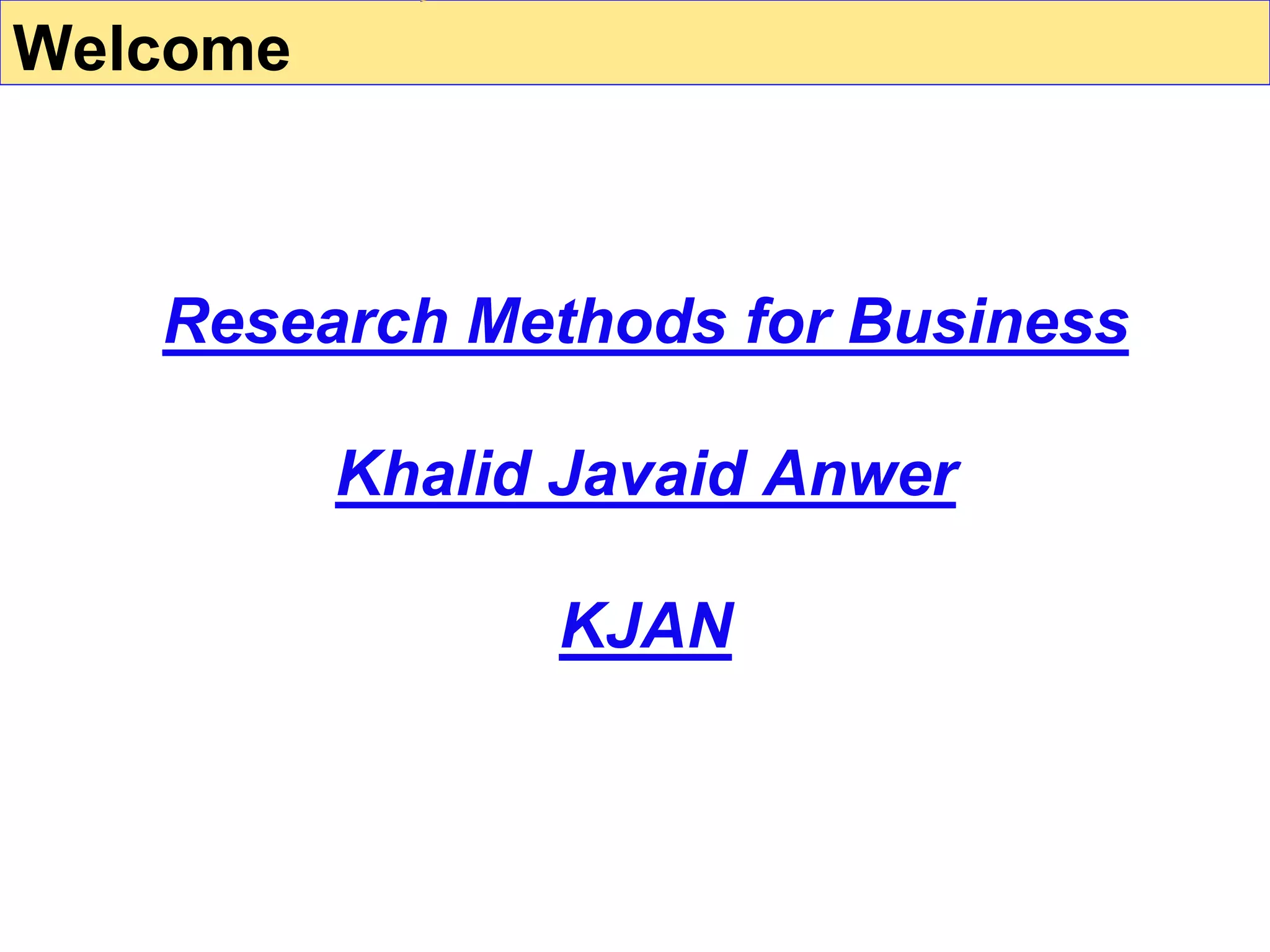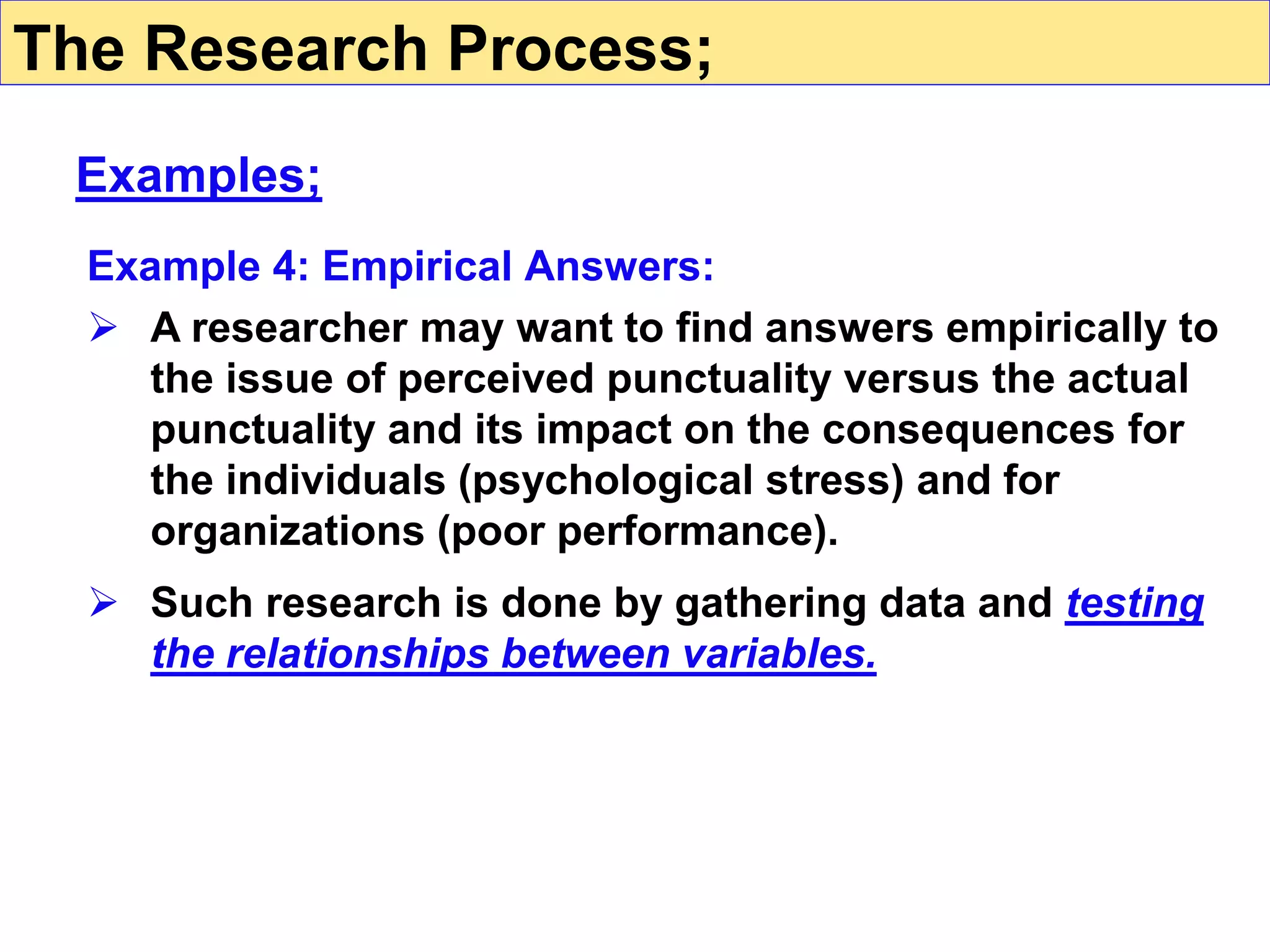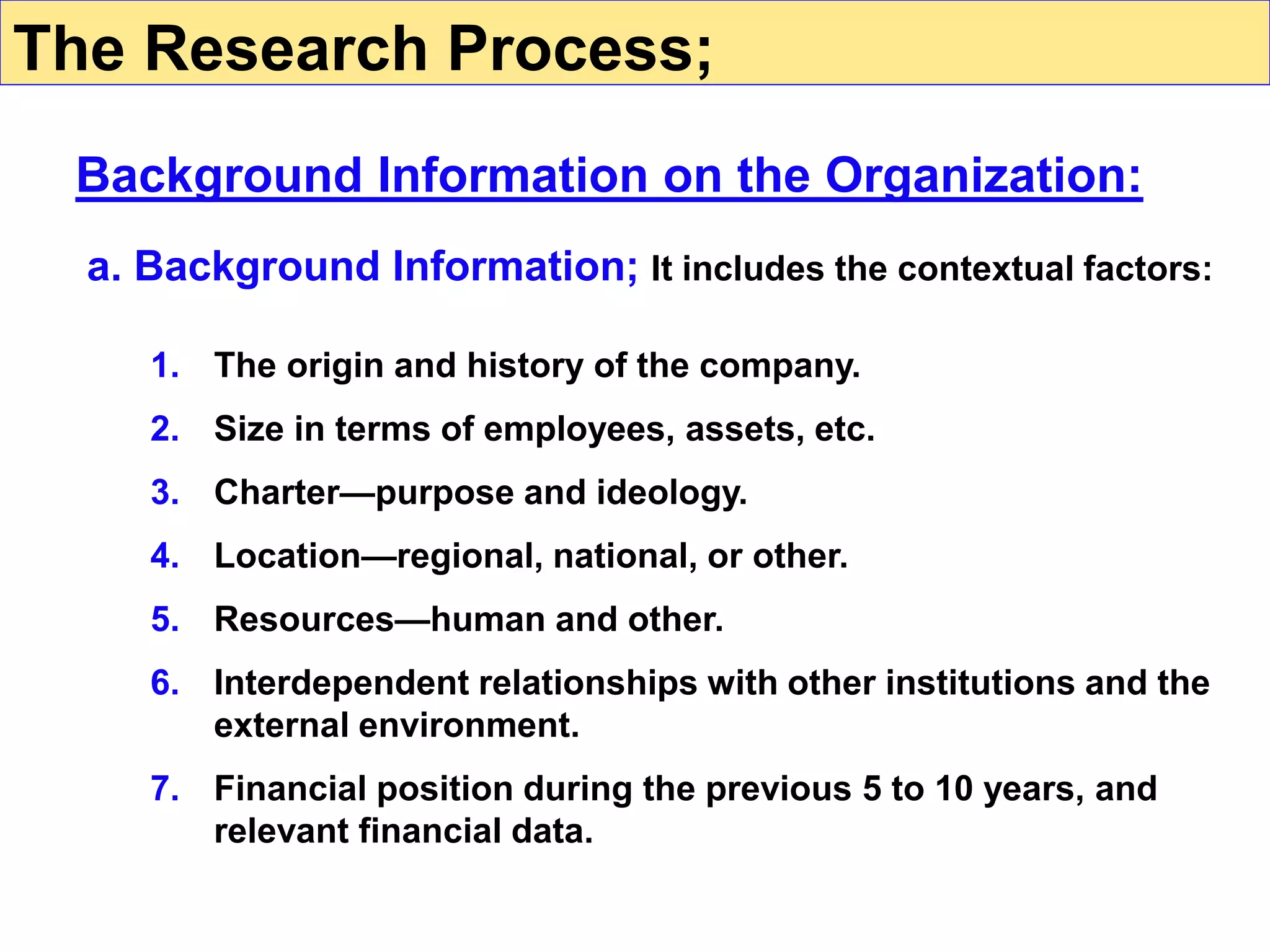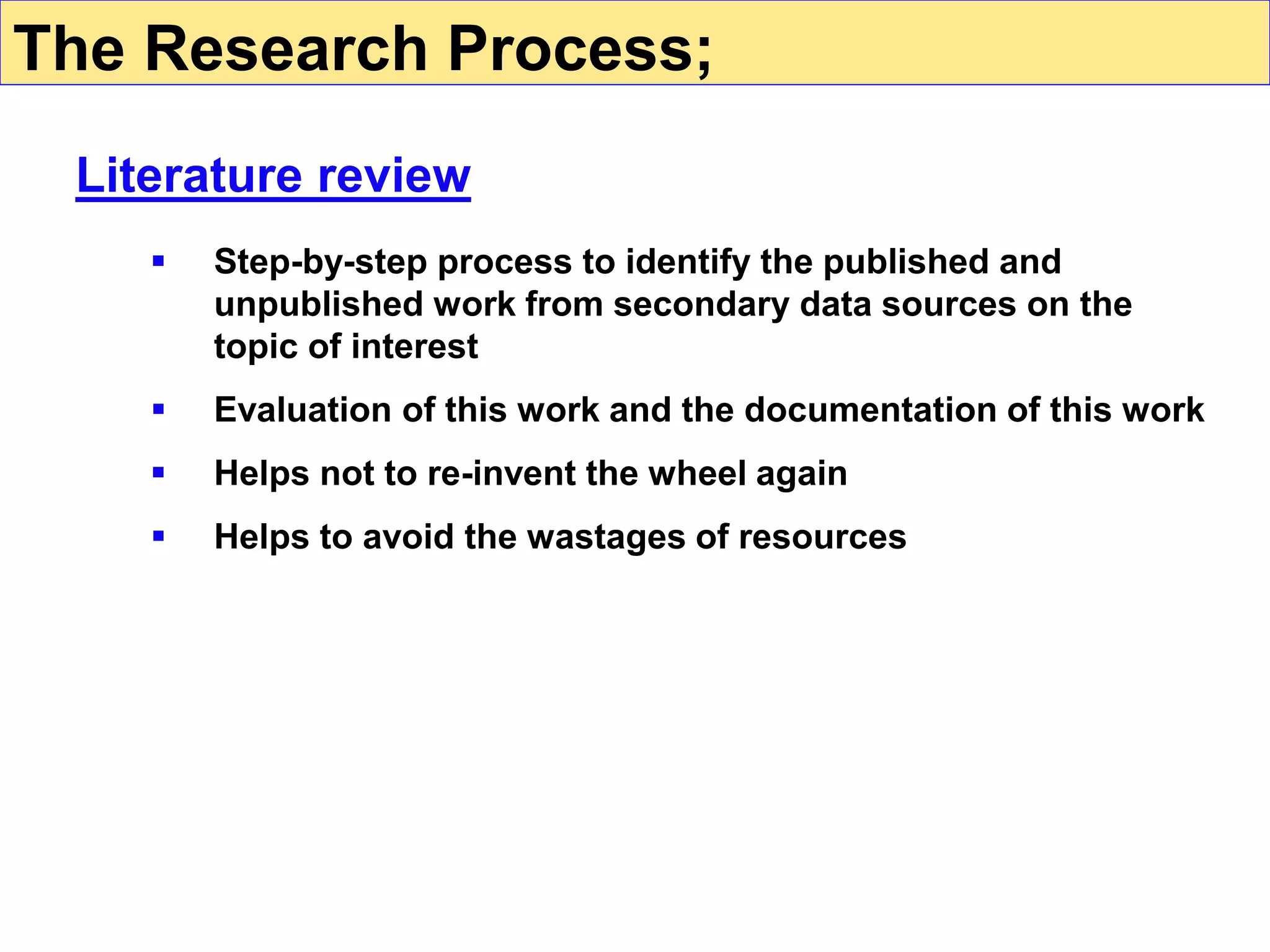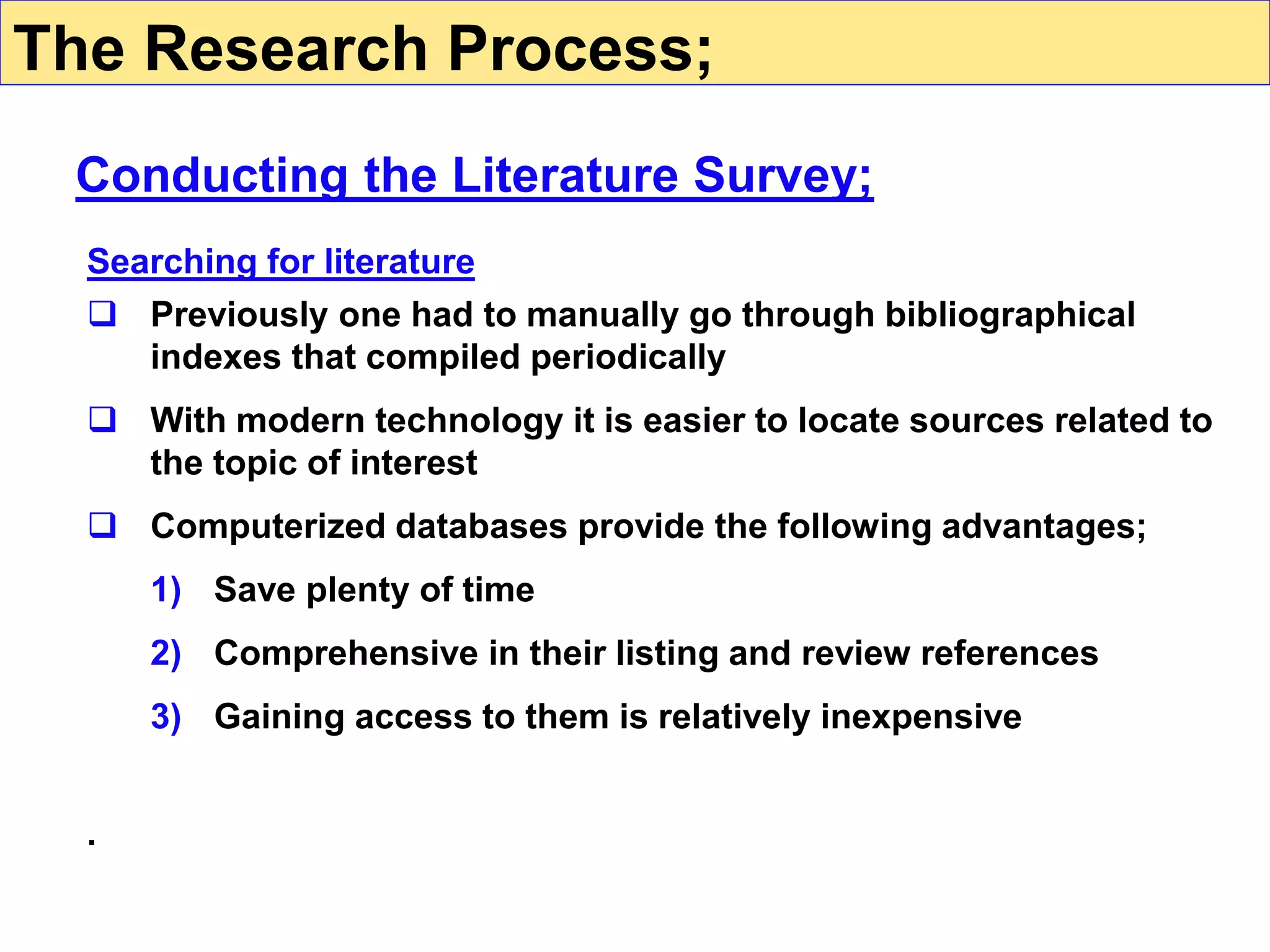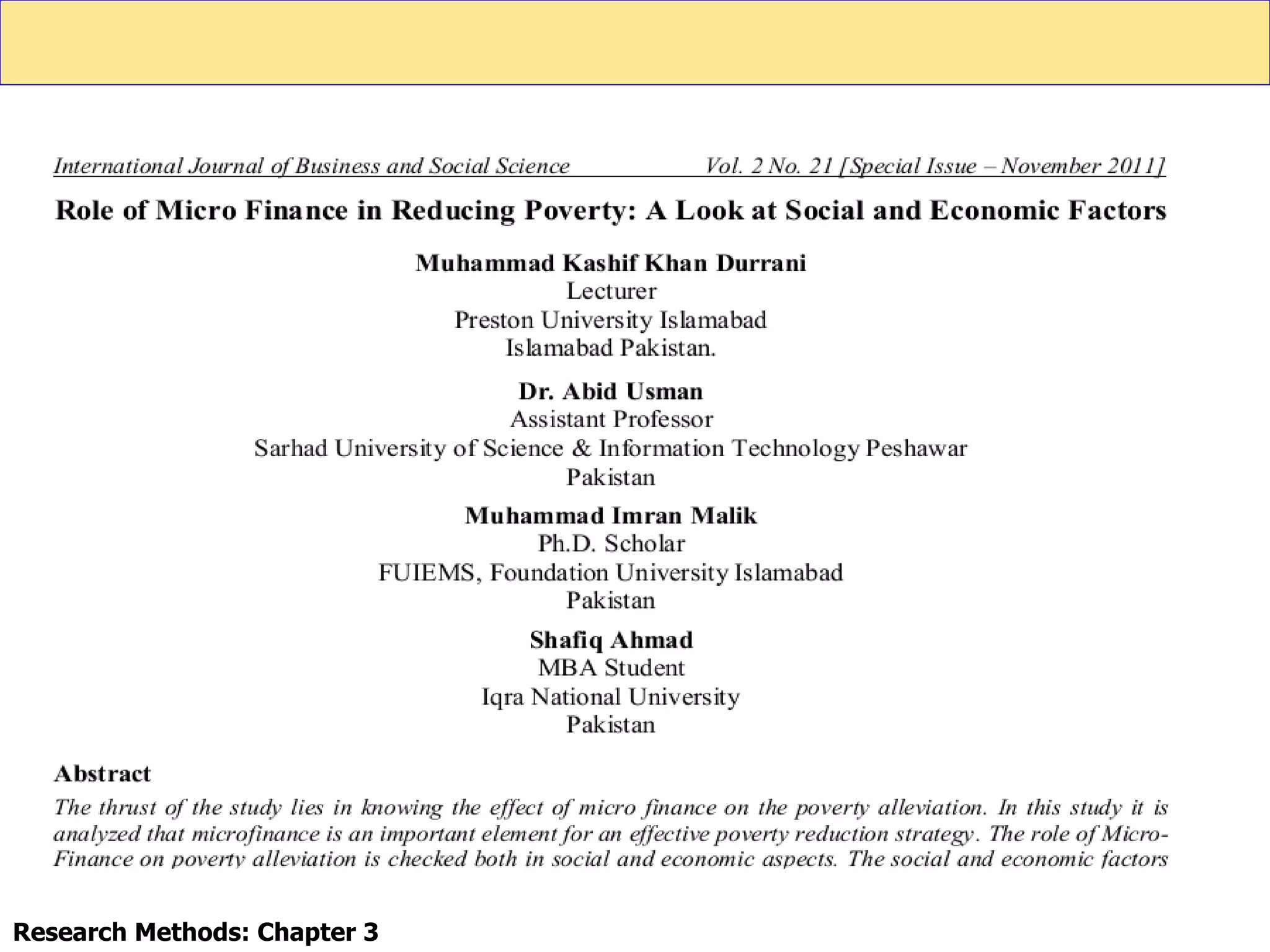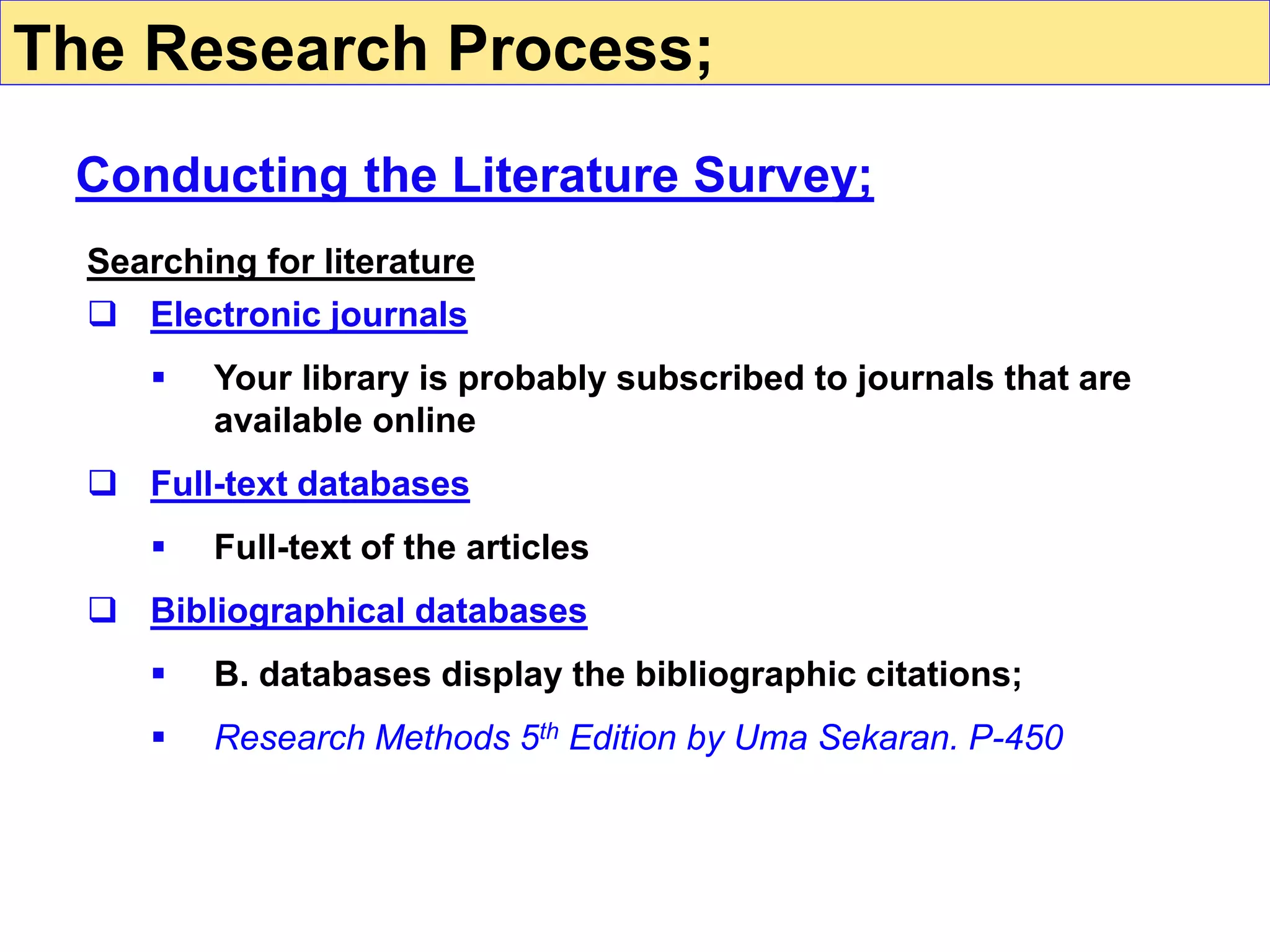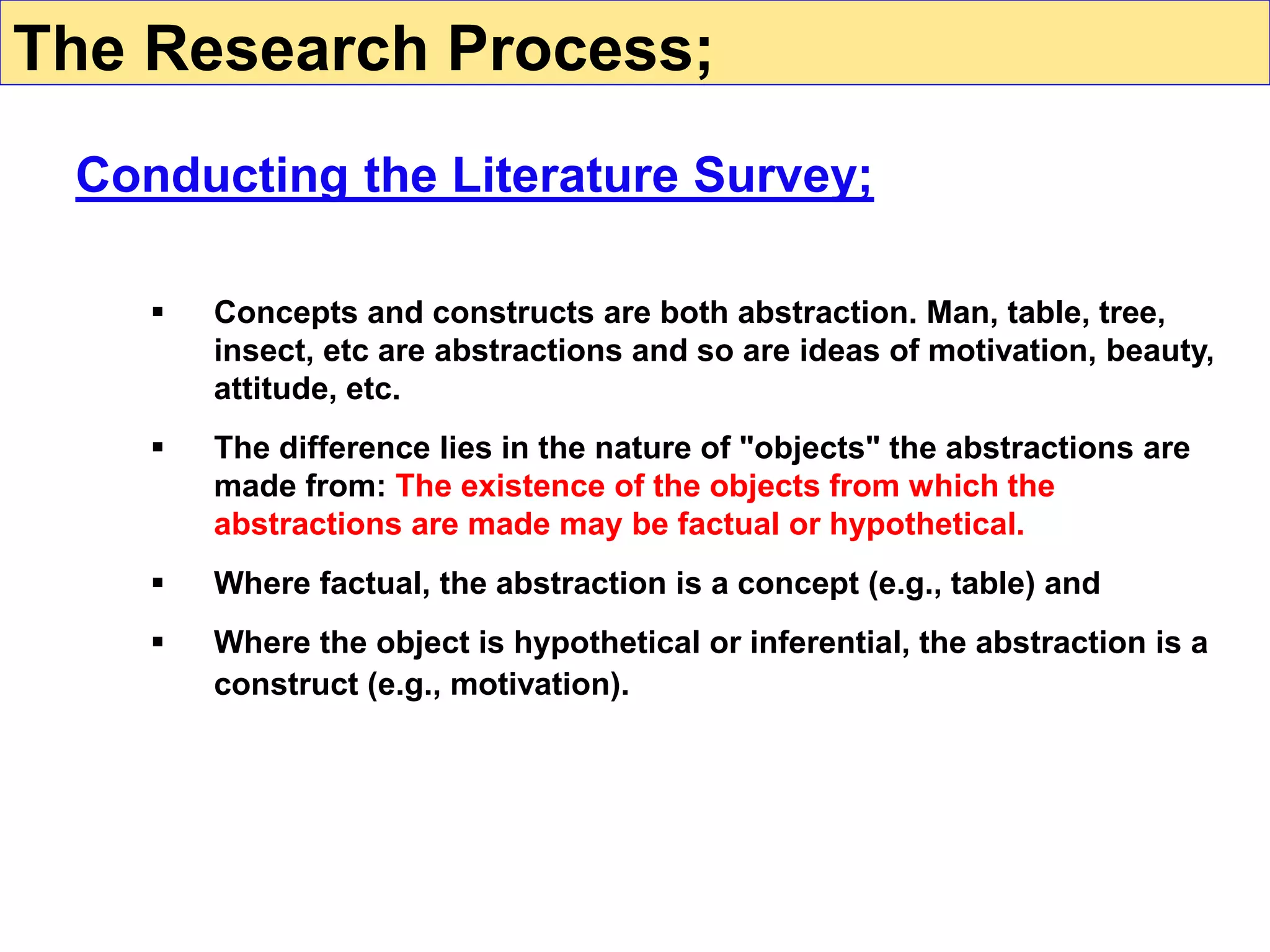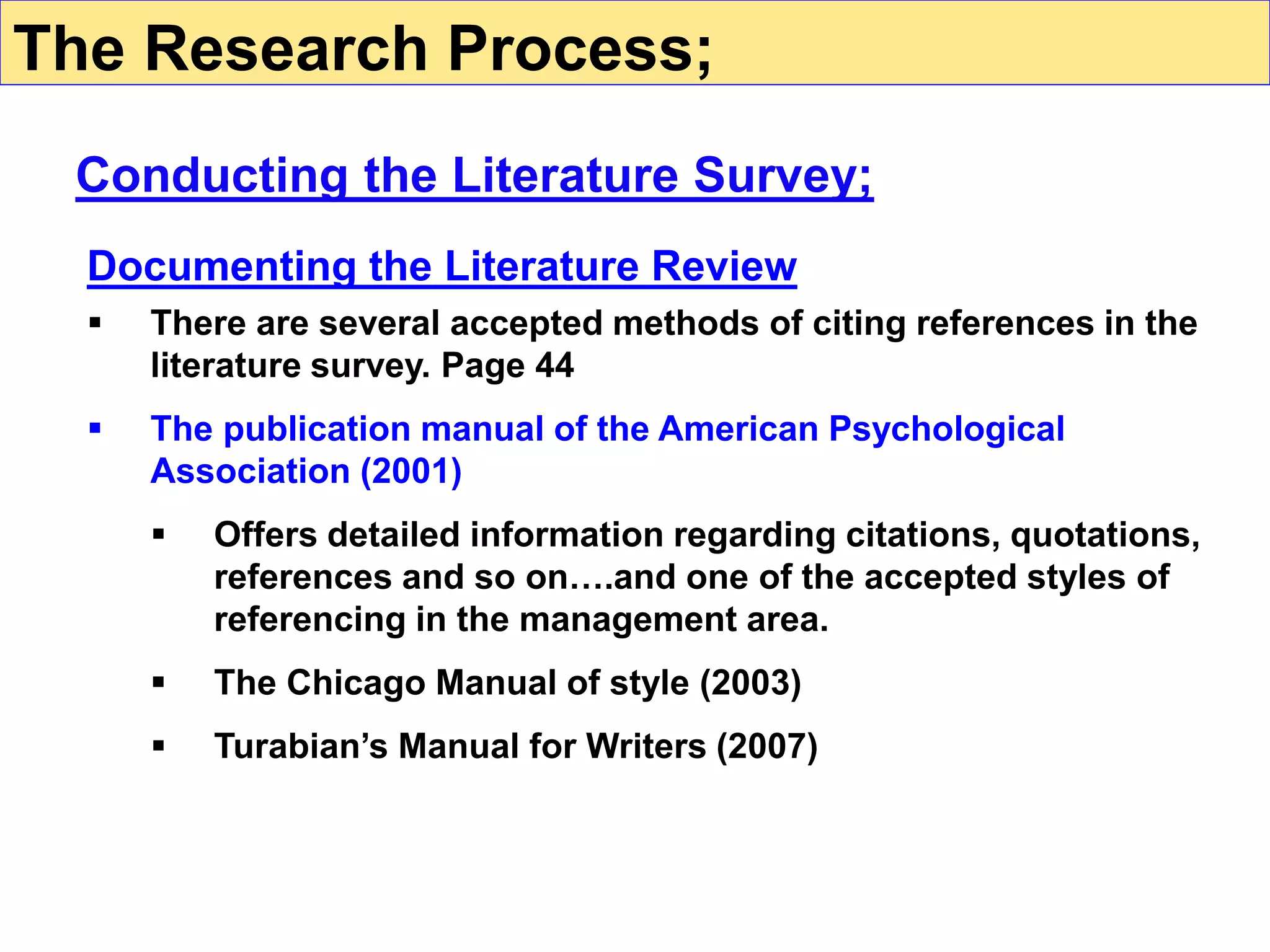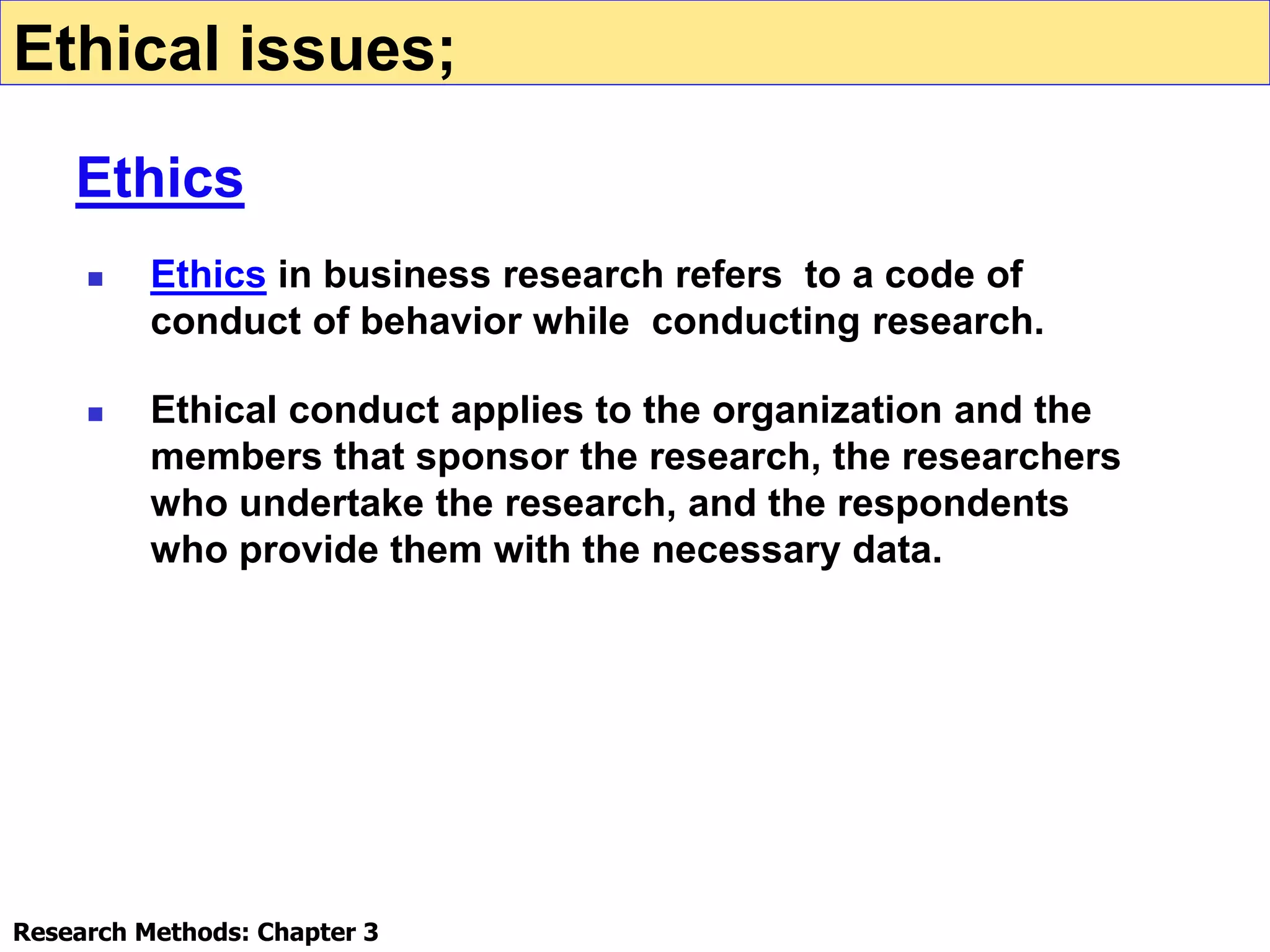The document outlines the key steps in the research process, including identifying a broad problem area, preliminary data gathering through literature reviews and interviews, clearly defining the research problem, developing a research proposal, considering managerial implications, and addressing ethical issues. It discusses gathering background information on the organization and relevant existing research to narrow down the problem. A good problem statement presents a clear, precise, and concise research question or issue to investigate. The research proposal allows the researcher and sponsor to agree upon the methodology, timeline, resources, and goals of the study prior to beginning research.
